

Pennyman baronets are holders of one of two baronetcies created for members of the Pennyman family.


Pennyman baronets are holders of one of two baronetcies created for members of the Pennyman family.
The Baronetcy of Pennyman of Marske was created in the Baronetage of England by Charles I on 6 May 1628 for William Pennyman of Marske Hall, Marske-by-the-Sea, North Yorkshire, a Master in Chancery. It was extinct on his death in 1643.
The Baronetcy of Pennyman of Ormesby was created in the Baronetage of England by Charles II on 22 February 1664 for James Pennyman of Ormesby Hall, near Middlesbrough, in North Yorkshire.
The Pennyman family, originally from Stokesley, North Yorkshire, began to establish their estates at Ormesby in the 16th century. They were Jacobite sympathisers; Robert Pennyman was convicted of treason and executed in 1569 for his part in the Pilgrimage of Grace. They were staunch Royalists in the 17th century. William Pennyman who was created the 1st Baronet in 1628 fought for the King at the Battle of Edgehill. His elder legitimate half brother James Pennyman was raised to the Baronetage after the Restoration of Charles II.
In 1703 there was a marriage reported of Sir? Thomas Pennyman to Lady Margaret Pennyman that only lasted three months. [1]
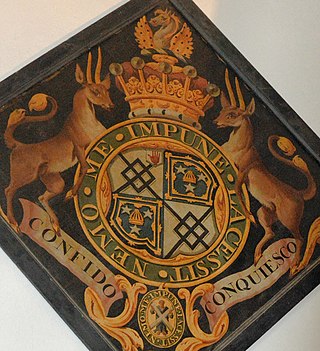
Earl of Dysart is a title in the Peerage of Scotland. It was created by King Charles I in 1643 for William Murray and has been held continuously since then by his descendants.

There have been three baronetcies created for persons with the surname Booth, one in the Baronetage of England and two in the Baronetage of the United Kingdom. The 1916 creation remains extant, the 1835 creation became extinct in 1896 and the 1611 baronetcy has been dormant since 1797. The senior line of the first creation was elevated to the peerage as Baron Delamer and Earl of Warrington.

There have been seven baronetcies created for members of the Lowther family, one in the Baronetage of Nova Scotia, two in the Baronetage of England, two in the Baronetage of Great Britain and two in the Baronetage of the United Kingdom. Two of the creations are extant as of 2008.
There have been three baronetcies created for members of the Anstruther family, two in the Baronetage of Nova Scotia and one in the Baronetage of Great Britain. Two of the creations are extant while one is extinct.

Marske Hall is a 17th-century former mansion house, now a Valorum Care Group residential care home, in Marske-by-the-Sea, Redcar and Cleveland, England. It has Grade I listed building status.
Nineteen baronetcies have been created for persons with the surname Hamilton, eight in the Baronetage of Nova Scotia, one in the Baronetage of England, five in the Baronetage of Ireland, one in the Baronetage of Great Britain and four in the Baronetage of the United Kingdom. As of 2008 two creations are extant, two are dormant, two are either extinct or dormant and twelve extinct.

Sir Thomas Aston, 1st Baronet was an English politician who sat in the House of Commons in 1640. He fought for the Royalist cause in the English Civil War. The portrait he commissioned from John Souch of his first wife Magdalene Aston on her deathbed is in Manchester Art Gallery. He is known as an apologist for the Church of England.
There have been five baronetcies created for persons with the surname Vavasour, three in the Baronetage of England and two in the Baronetage of the United Kingdom. As of 2008 four of the creations are extinct while one is extant.

The Worsley family is an English family that is derived from Sir Elias de Workesley, a Norman knight who was a youth at the time of the Norman conquest. He later accompanied Duke Robert II of Normandy on the First Crusade and was buried at Rhodes.

There have been two baronetcies created for different branches of the Throckmorton family, 6th cousins, both descended from Sir John Throckmorton, Under-Treasurer of England temp. King Henry VI (1422–1461). Both titles, which were in the Baronetage of England, are now extinct. The Throckmortons, originally of Throckmorton near Pershore, Worcestershire, trace their history back to the 12th century. In 1409 Sir John de Throckmorton, Under-Treasurer of England, married Eleanor Spinney, daughter and heiress of Guy Spinney of Coughton, Warwickshire, where the senior branch of the family, which bore the junior baronetcy, became established. The Coughton estate included in 1968 a dower house named "Spiney House, Coughton", named after that family. The senior Throckmorton Baronetcy, of Tortworth in the County of Gloucester, was created in the Baronetage of England on 29 June 1611 for William Throckmorton, of Coss Court, Tortworth, Gloucestershire, sixth in descent from John Throckmorton, younger son of Sir John Throckmorton, Under-Treasurer of England. The third Baronet sat as Member of Parliament for Gloucestershire and Wotton Basset. The title became extinct on the death of the fourth Baronet in a duel in 1682.
There have been three baronetcies created for persons with the surname Wiseman, all in the Baronetage of England. Only one creation is extant as of 2008.
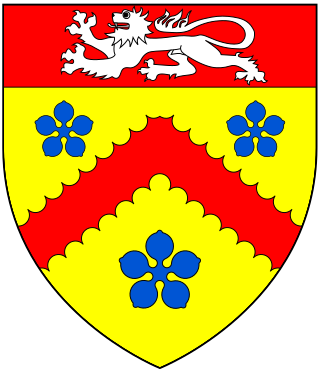
There have been three baronetcies created for persons with the surname Cooke, two in the Baronetage of England and one in the Baronetage of Ireland. One creation is extant as of 2013.

There have been two baronetcies created for members of the Fleetwood family, an old Lancashire family, one in the Baronetage of England and one in the Baronetage of the United Kingdom. Both creations are extinct.

There have been three baronetcies created for members of the Sedley family of Kent, all in the Baronetage of England. All three creations are extinct.

The Fitton Baronetcy, of Gawsworth in the County of Chester, was a title in the Baronetage of England. It was created on 2 October 1617 by James I for Sir Edward Fitton, of Gawsworth Hall, Gawsworth, Cheshire, 1572-1619. The Fitton family were settled in Gawsworth from about the 13th century. The first Baronet's ancestors included Sir Edward Fitton (1500–1553), High Sheriff of Cheshire in 1544 and Sir Edward Fitton (1527–1579), Treasurer of Ireland and President of Connaught. His father Sir Edward Fitton (1548–1606) was an unsuccessful colonist of Munster. His sister, Mary Fitton, was Maid of Honour to Elizabeth I.
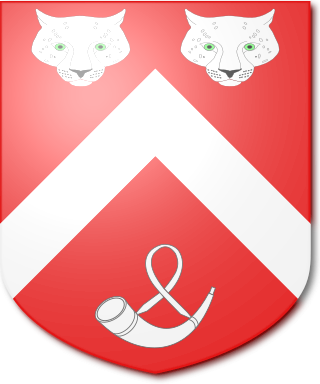
There have been four baronetcies created for members of the Slingsby family who settled at Scriven Hall, Scriven, Knaresborough, Yorkshire in the 14th century.

Sir William Pennyman was an English landowner, soldier and politician.

There have been two baronetcies created for persons with the surname Leicester, both in the Baronetage of England. The fifth Baronet of the second creation was raised to the peerage as Baron de Tabley in 1826. Both the barony and the two baronetcies are now extinct.
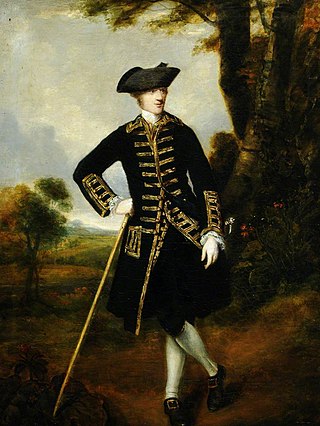
Sir James Pennyman, 6th Baronet (1736–1808) was a British politician who sat in the House of Commons for 26 years from 1770 to 1796.
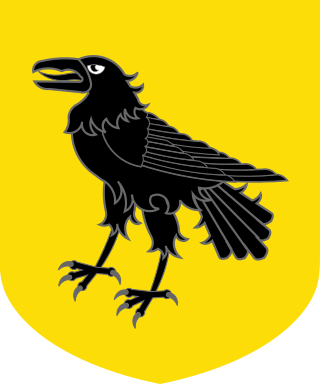
The Corbet baronetcy, of Sprowston in the County of Norfolk, was created in the Baronetage of England on 4 July 1623 for John Corbet, of Sprowston. He was son of Sir Thomas Corbet, Kt, High Sheriff of Norfolk in 1612. He sat as Member of Parliament for Norfolk and Yarmouth. He was the elder brother of the regicide Miles Corbet. The title became extinct on the death of the third Baronet in 1661.